About five weekends ago I did a little foyer makeover but there was something missing—enter our new DIY salvaged door:
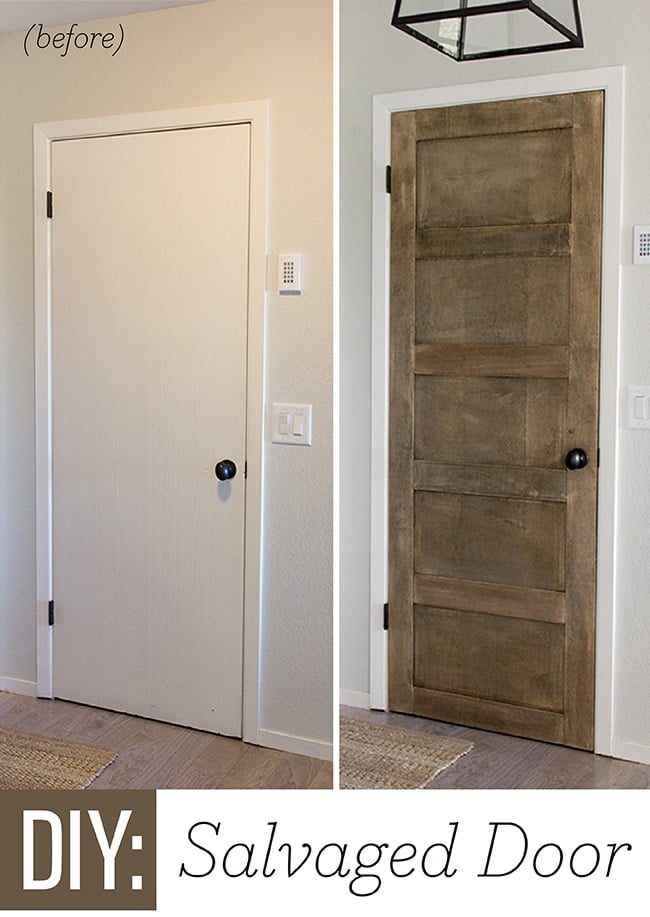
I couldn’t help but share a little preview on my instagram while staining it on Saturday…
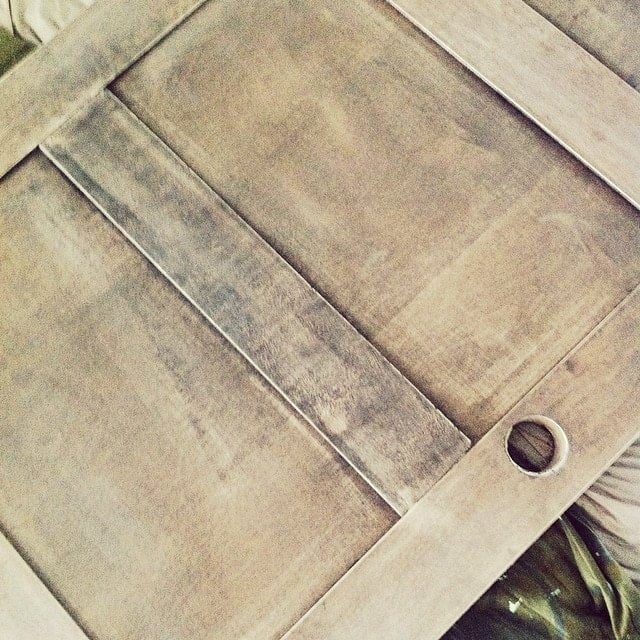
Jump to:
Materials list
- 2×8′ sheets of maple wood veneer
- Cabinet grade plywood (ripped down to 4″ strips)
- Contact cement
- Wood stain
Plain door Before
There’s not a lot of sources for real vintage doors around here, and the ones I do find are either not the right size or style, or would need too many mods to fit, or they’re just too expensive.
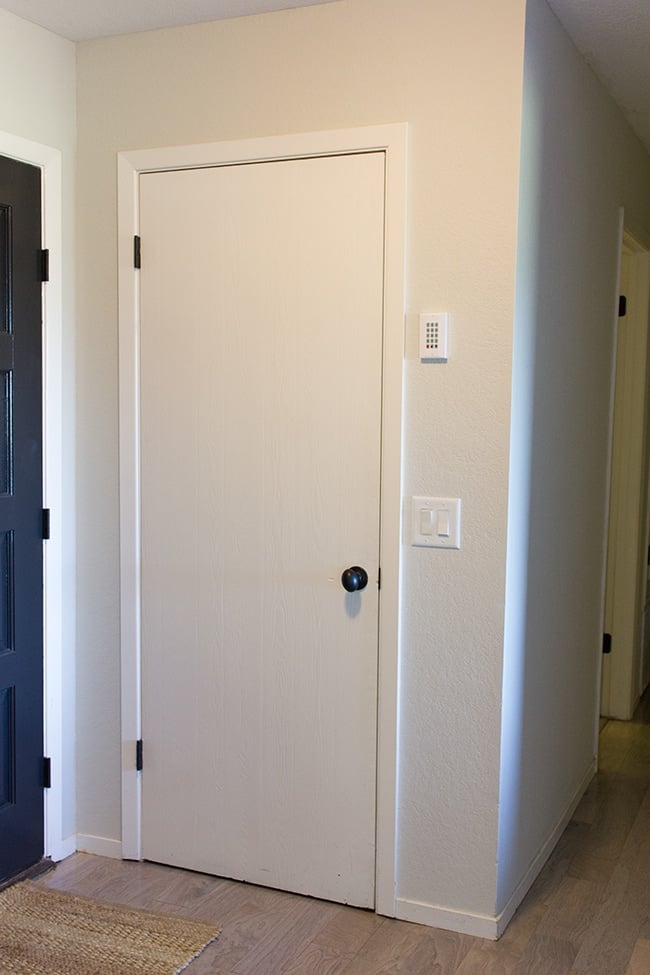
The existing door was one of those cheap-o hollow core synthetic wood deals… and it was pretty beat up. You can really see the fake wood grain texture here…
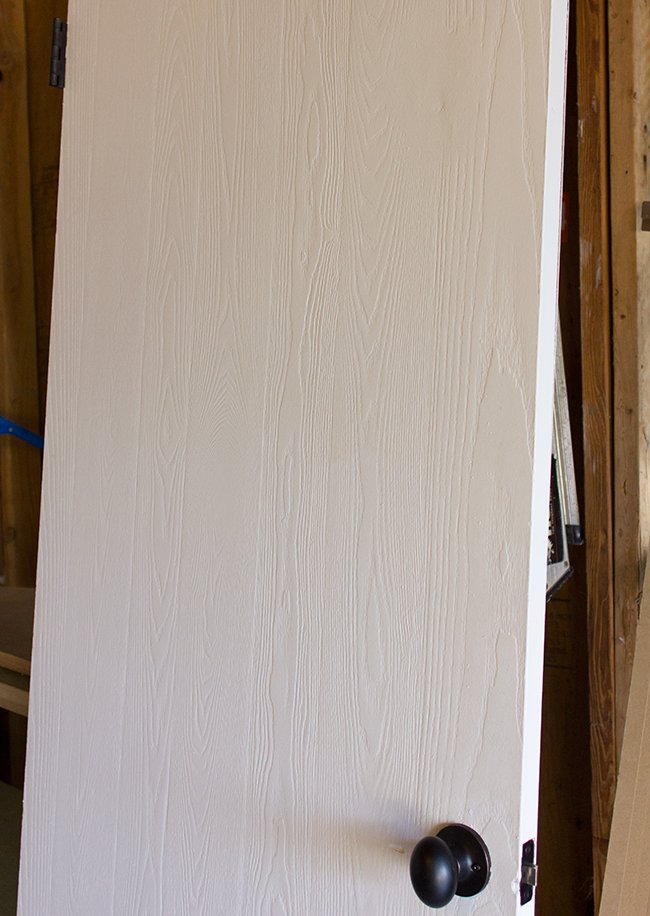
If you have one of those old school plain wood doors it would be ideal for this project, assuming you could sand down the stain a bit. Because mine wasn’t real wood, unfortunately I couldn’t strip & sand the paint off. That meant I had to face my worst nightmare again… wood veneer.
Cut veneer with a sharp utility knife
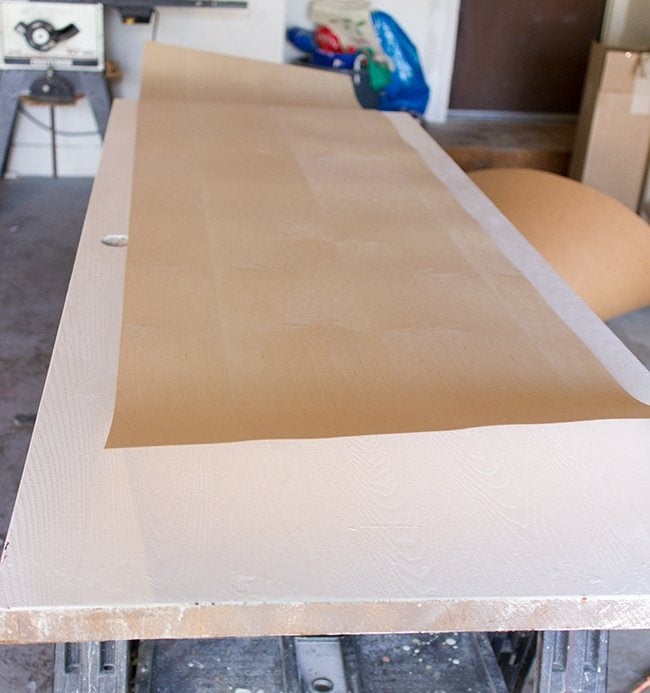
If you saw my post about my first attempt at this, you’ll understand why I hate it so much. Although to be fair, it’s the contact cement I hate—not the veneer.
Fortunately, I only needed veneer in the centers of the door so there was minimal cutting involved. I just trimmed the length with a sharp utility knife (it didn’t have to be exact at all since the edges would be covered by wood).
Apply contact cement liberally
This time I used a LOT of contact cement. Two solid coats.
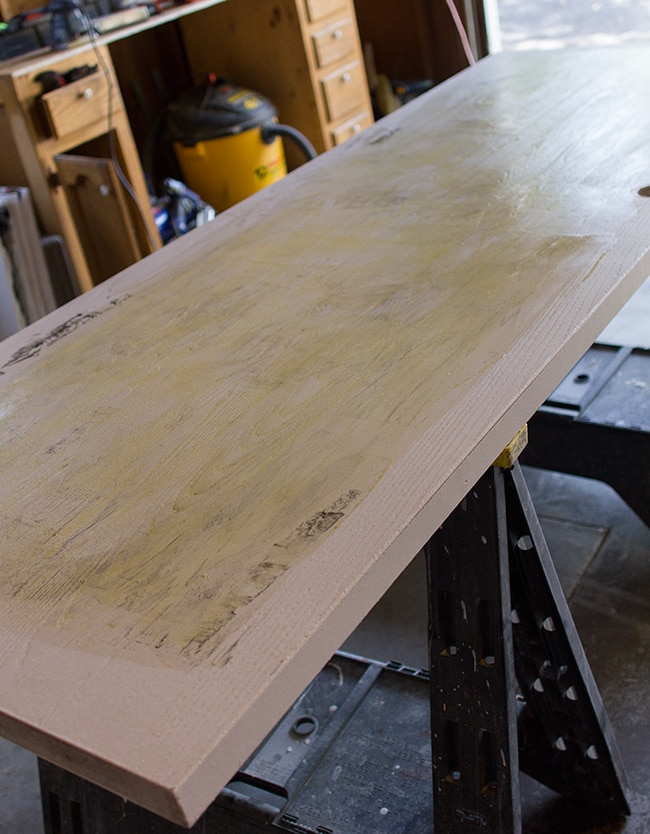
Attach the veneer sheet
And I waited 20 minutes before applying the veneer.
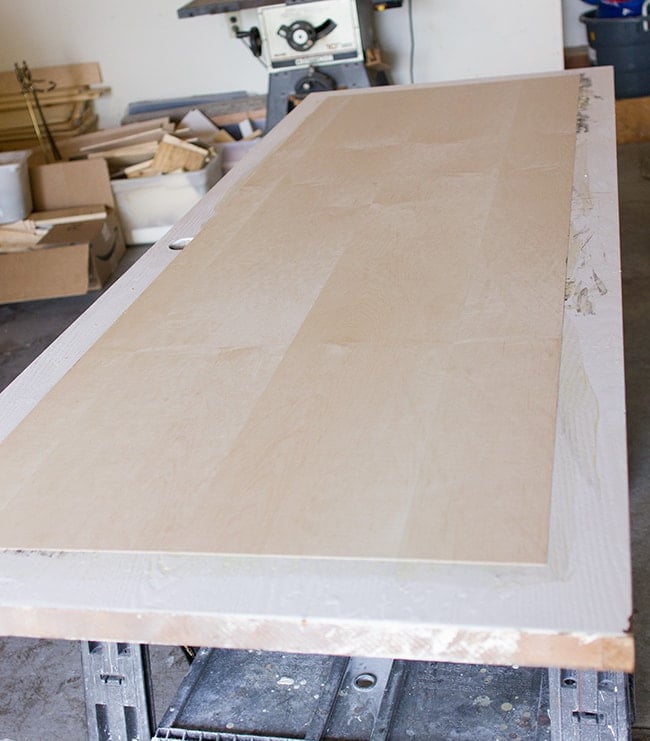
And it worked.
I thought I was going to have to veneer the inside edge, but I started sanding and realized this piece was actually real wood (score!) So I just stripped & sanded the paint off.
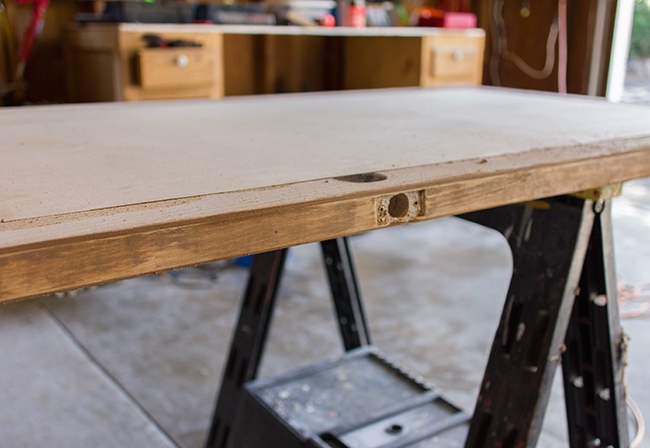
After veneering both sides, I brought the door inside of the house to adjust to the climate. On my last attempt, my table had sat in the garage for 2 days and after I brought it inside it was ruined, so the temperature shift definitely had something to do with it. I thought if I brought it inside right away, it would have a chance.
Keep in a climate controlled area while drying
That evening around midnight, I checked on it and was horrified to see that it had started bubbling! Not as bad as my console table, but still… I was so bummed. I smoothed it down as best as I could and called it a night, expecting to see the bubbles come back by morning. But surprisingly… I woke up and it was completely smooth.
Not sure what happened there, but I didn’t want to take any more chances so I decided to finish this project inside…
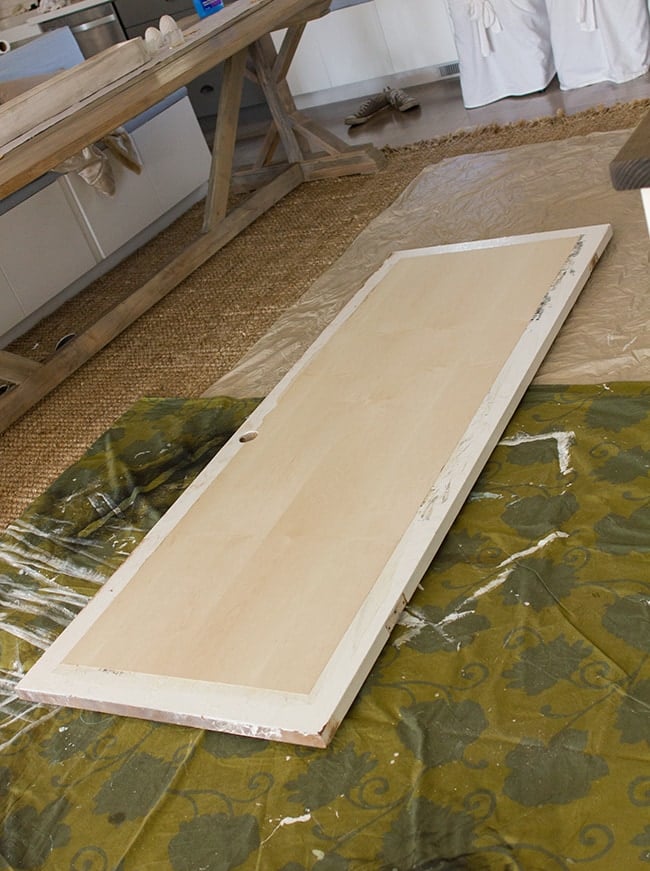
Back in the garage, I had plywood strips cut to 4″. I bought a sheet of cabinet grade plywood at Lowe’s ($30) and had them cut it for me. I would have done it myself, but the sheet was too big to fit in my car so I let them do it.
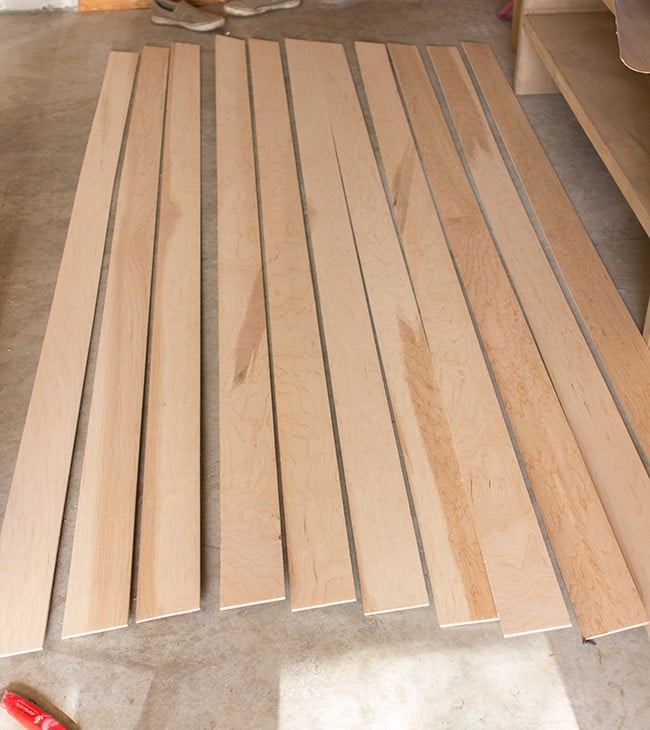
Let me tell you… those workers don’t care about your project as much as you do, so they’re just going to run your board through the cutter as fast as they can and you’re going to end up with a lot of crooked pieces.
I only needed about 7-8 boards, so I set aside the straightest ones to use for this project.
Use an arbor bit to cut a door handle opening
I started with one of the vertical pieces that ran along the outside edge where the door handle would be. After cutting the length to size, I traced inside the door hole and used an arbor around the same size to cut it out:
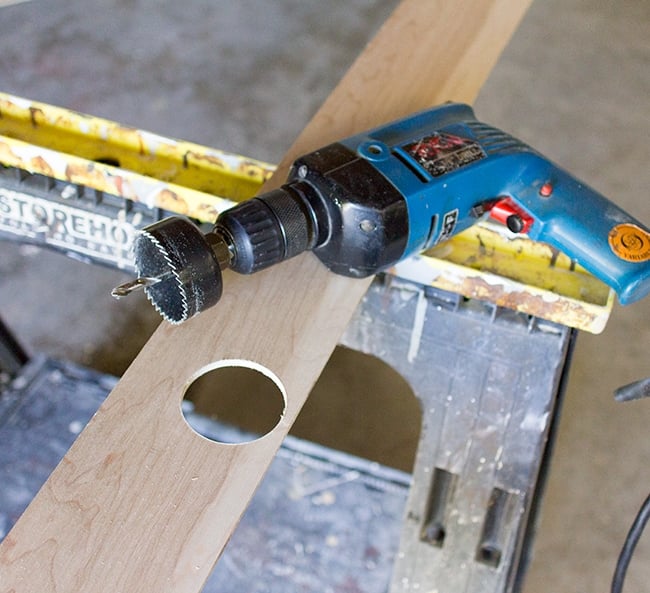
Attach longest plywood strips
Then I lined it back up on the door and used 1″ finishing nails every several inches to attach my piece:
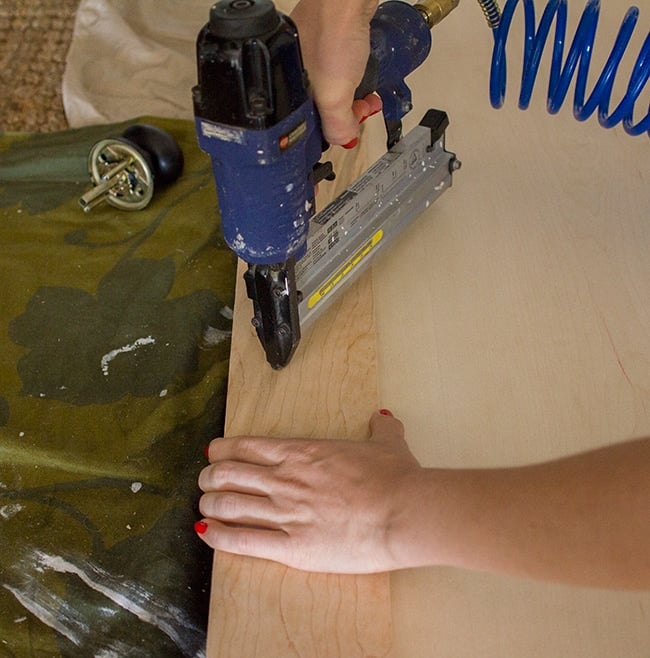
And the first piece was on!
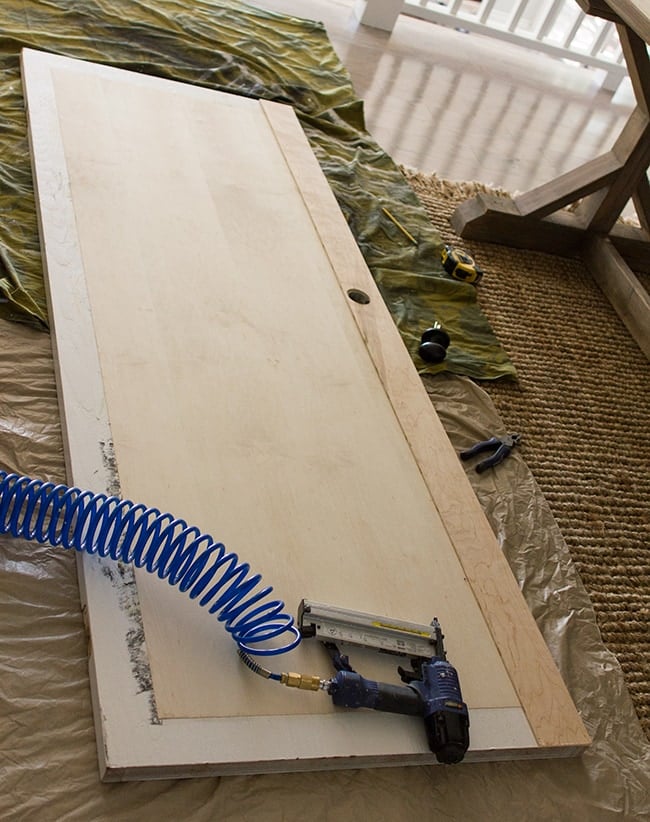
Up went the next one…
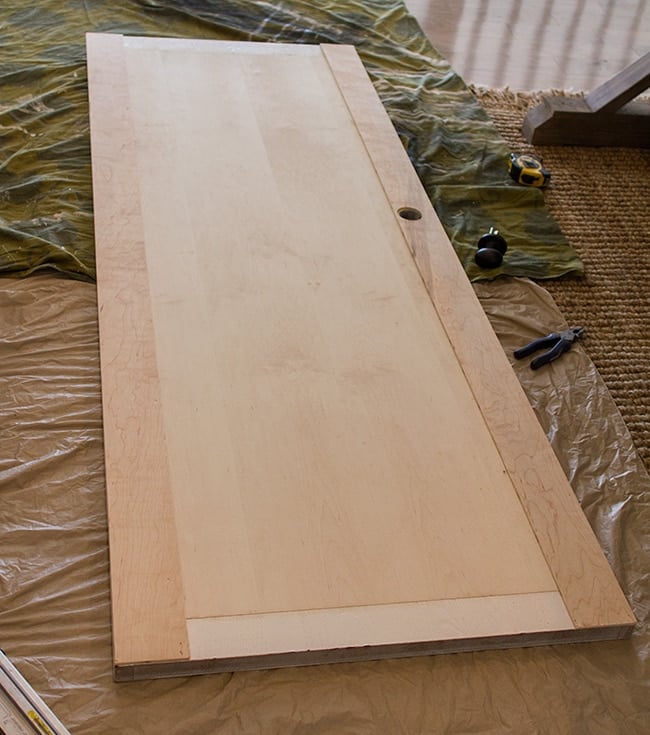
Attach horizontal plywood strips
Then I measured and cut my horizontal strips. I went with 6 which appears to be standard for old doors.
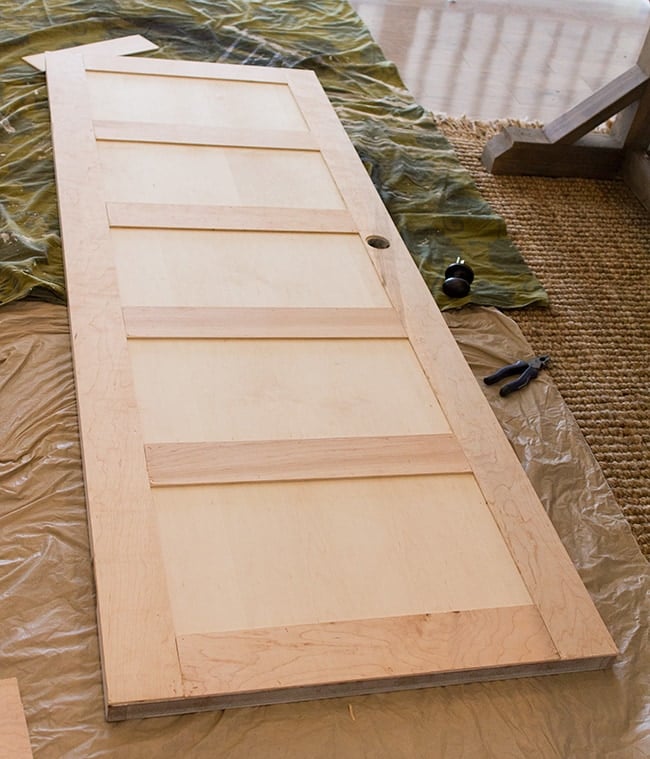
Then I flipped it over and repeated the process:
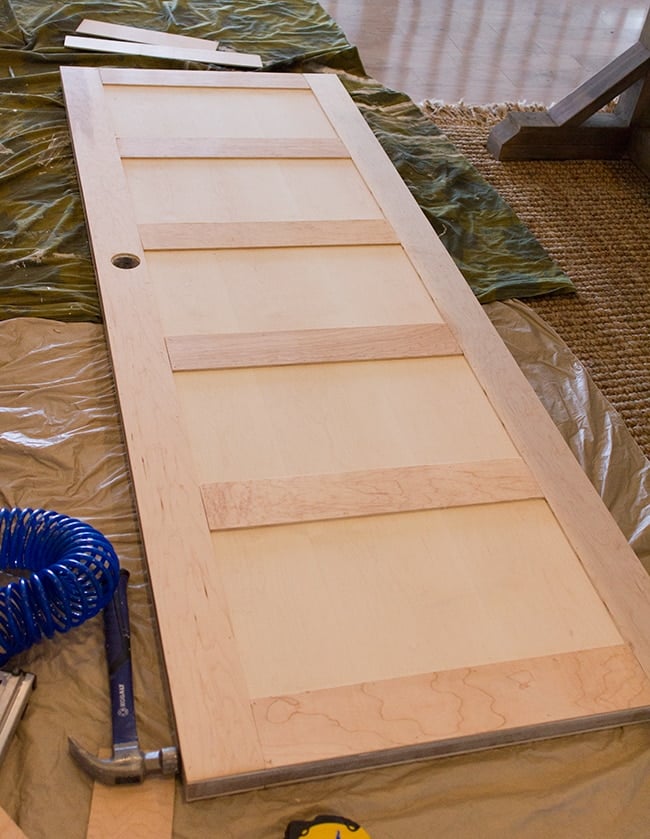
Stain door
And finally, it was time for stain.
I used a blend of Minwax’s Dark Walnut combined with touches of Rustoleum’s Driftwood and Weathered Gray. There was no real method to this… I just dipped my sponge in and spread it around however I thought looked best. I intended for it to look weathered so I wasn’t aiming for perfection.
Tip: use wood conditioner first for more even coverage!
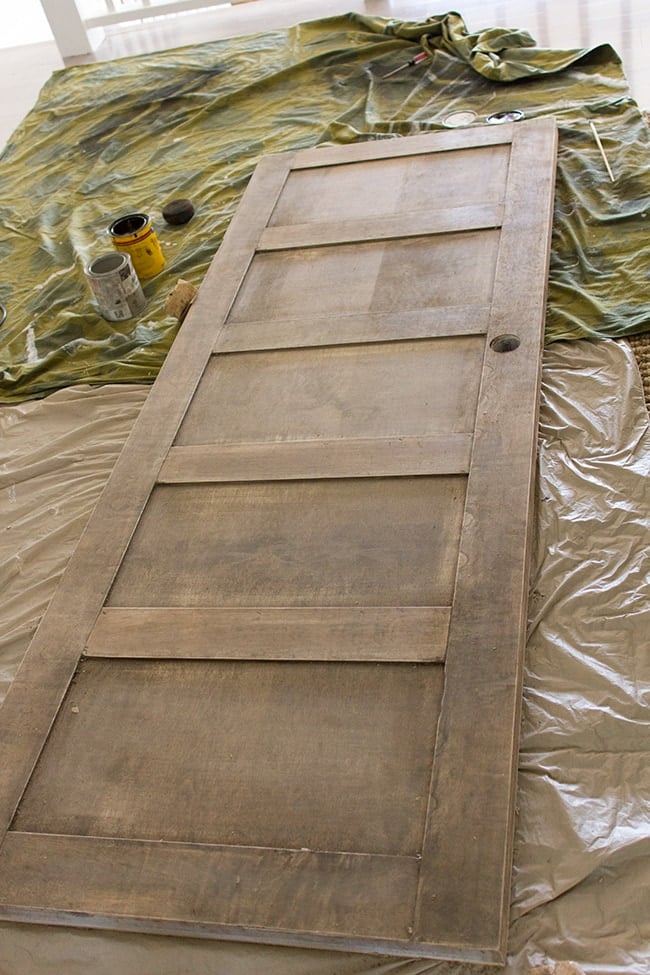
Lightly sand to age wood
Then I took some 60 grit sandpaper and roughed it up until I was happy with the results.
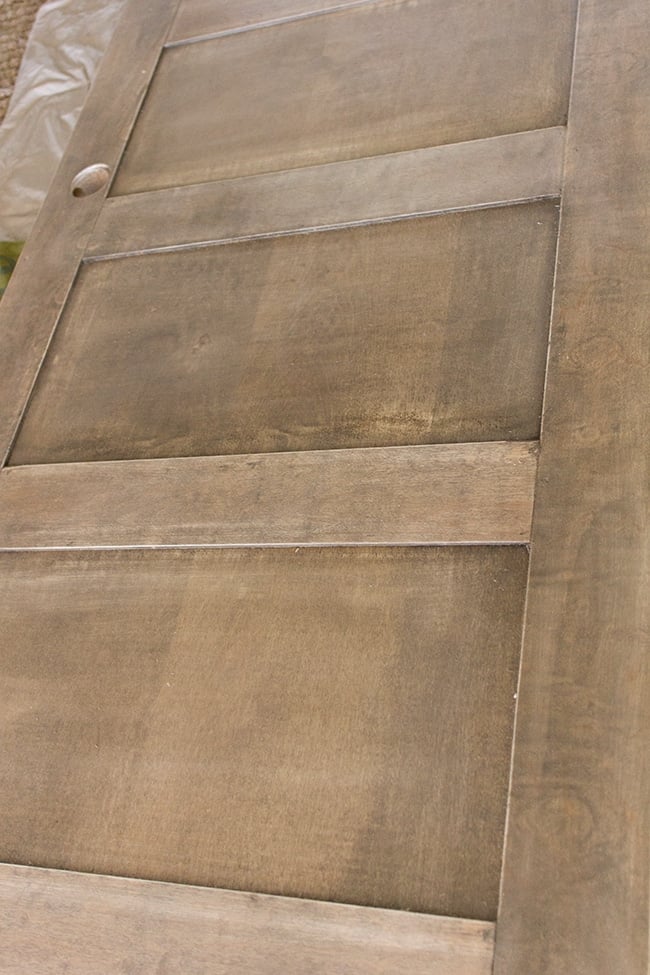
Adjust and reinstall door casing trim
Before rehanging it, we had to deal with this door casing. Because I made the door wider, these inside pieces of trim had to be pushed back so the door would latch properly.
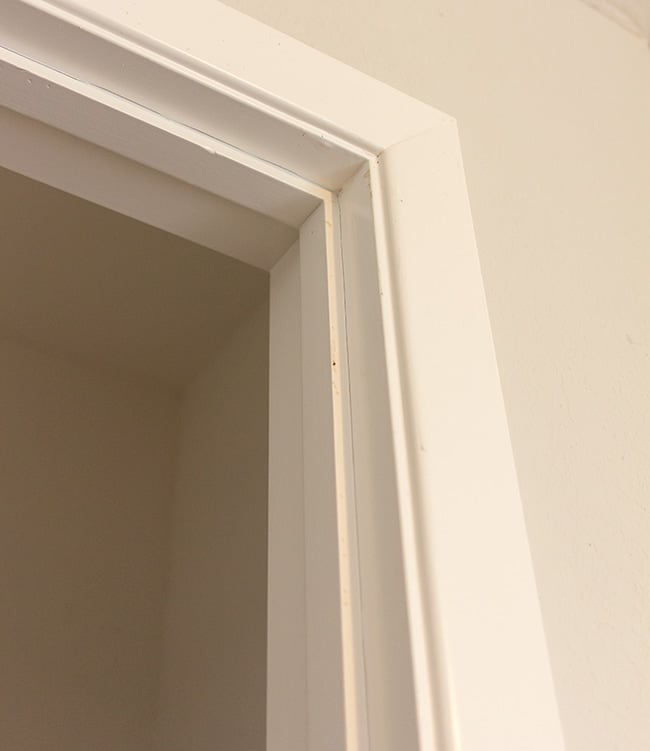
We removed the strips…
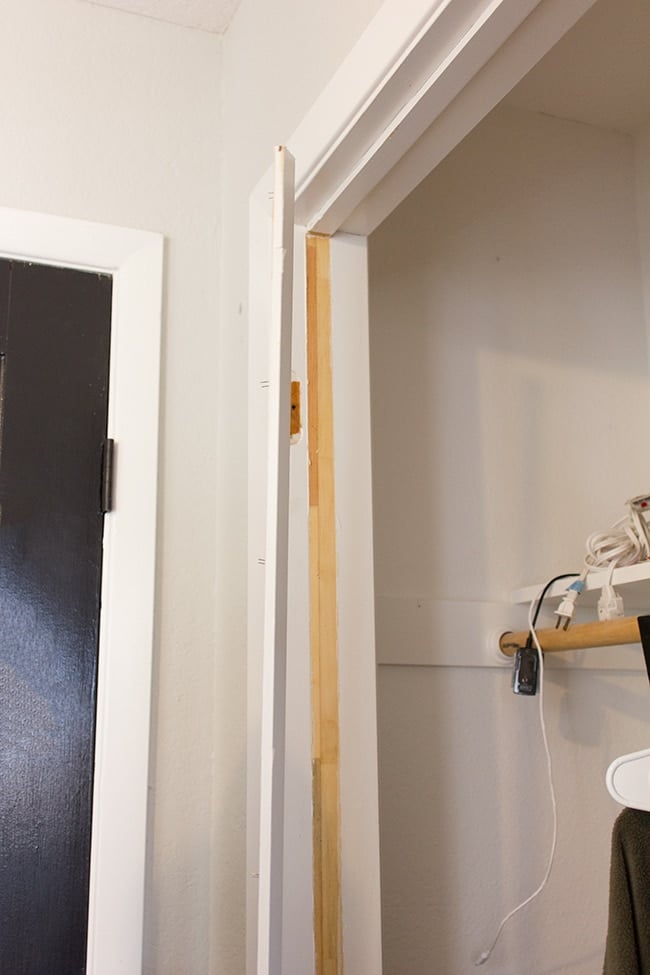
It was pretty rough looking under there, so I sanded everything down while Brad removed the old nails.
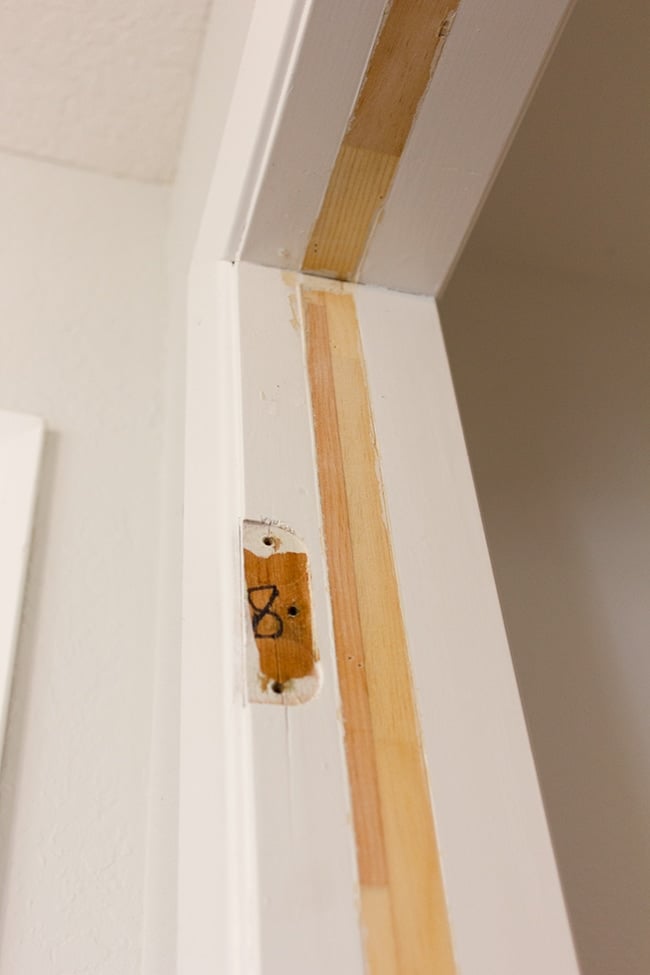
Before putting them back on, the door went back on the hinges…
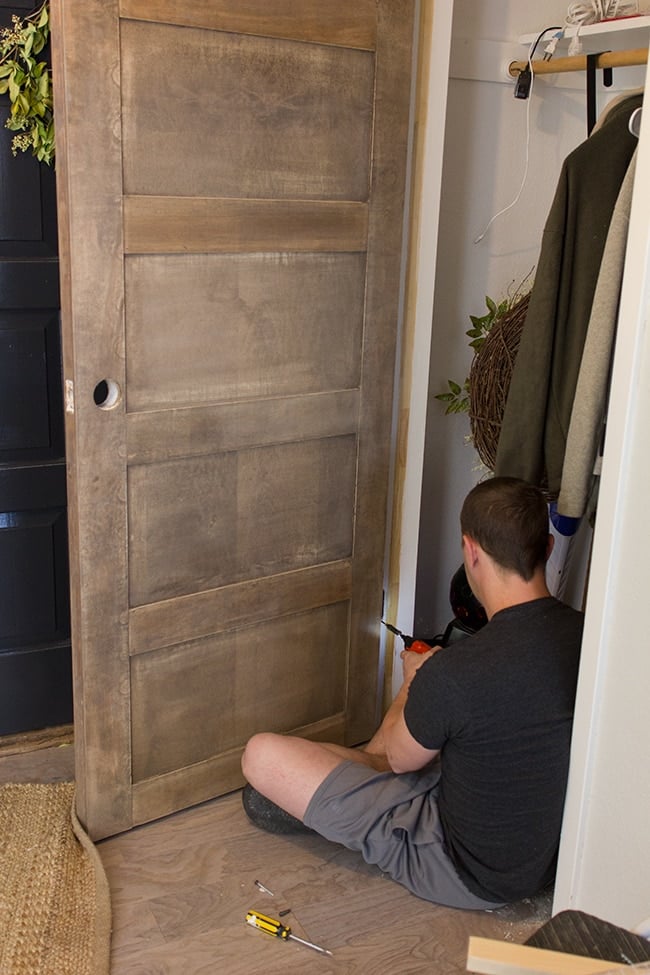
Then I stepped inside the closet with my air compressor and flashlight, shut the door, lined the casing strips back up and nailed them in.
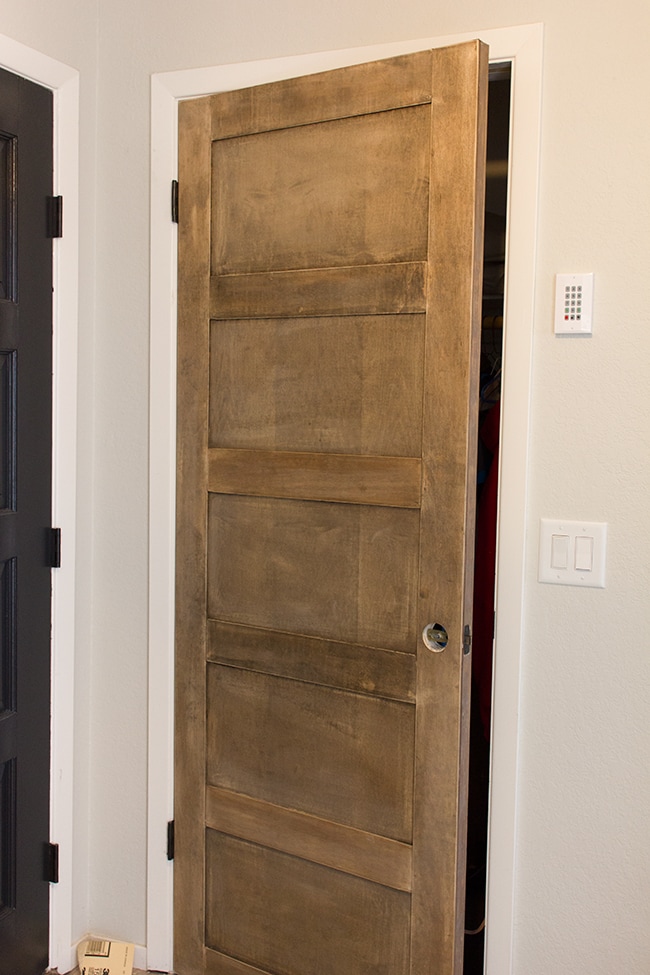
Finished result
A bit of caulk & paint later, and this project is done!
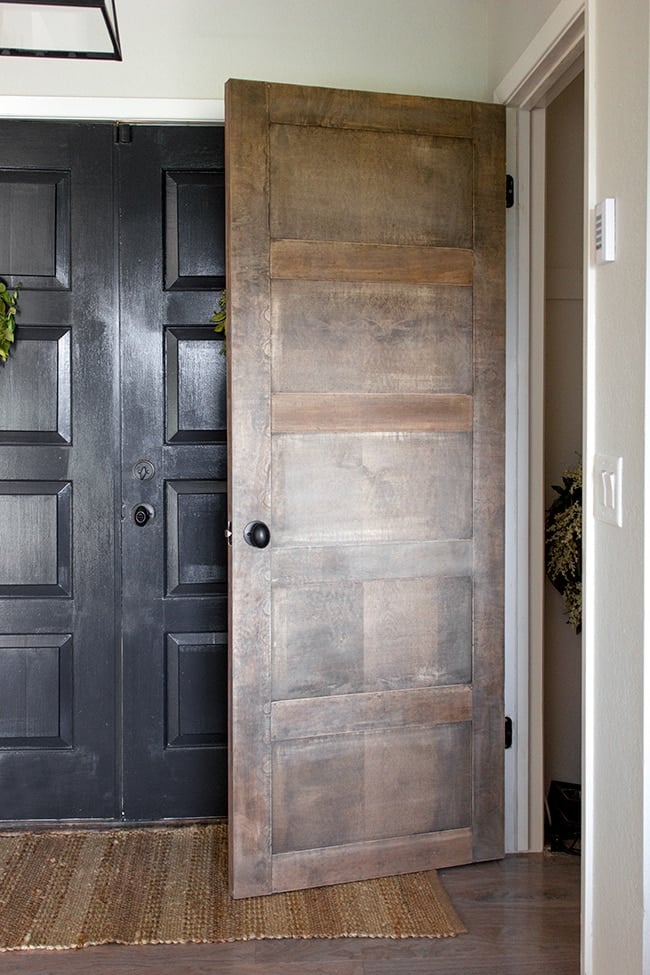
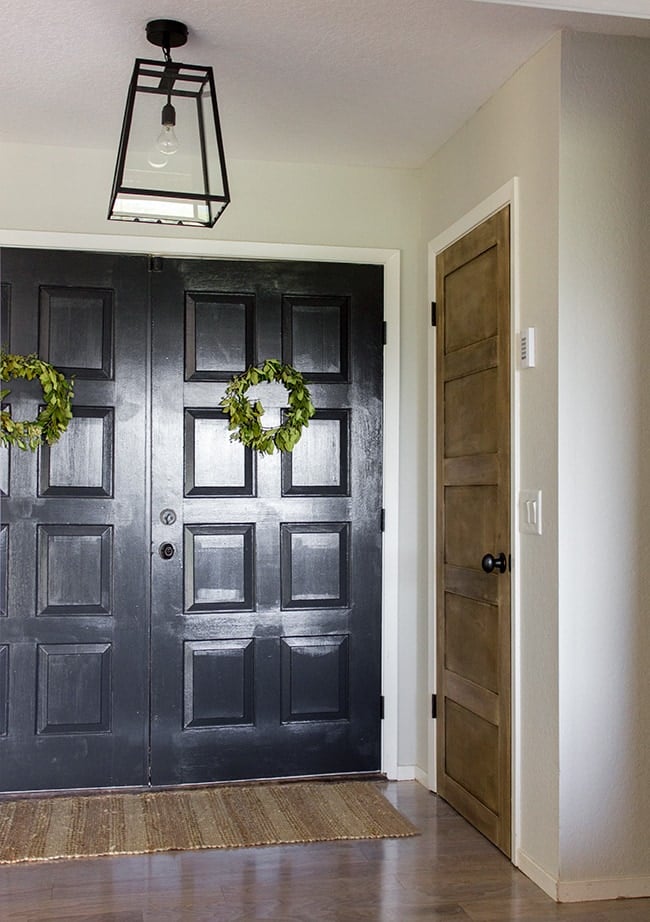
And here’s the new light in action:
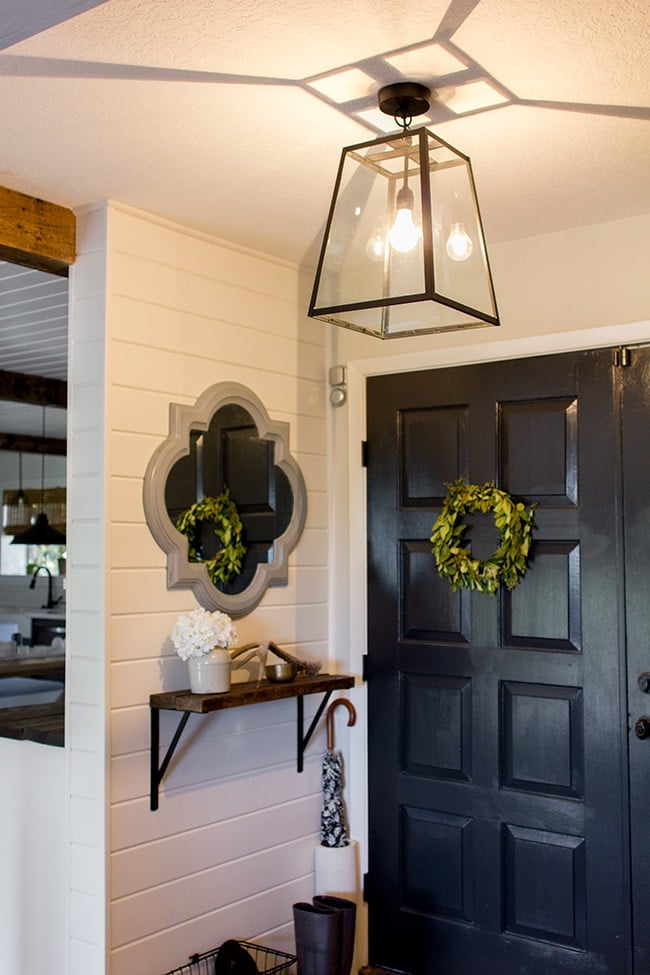
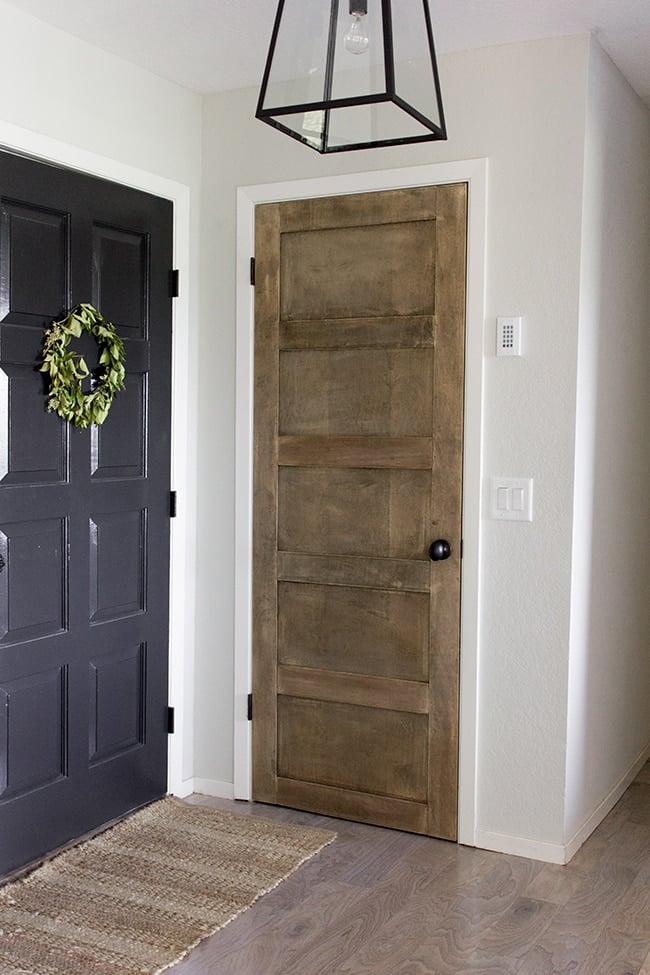
I love the way it warms up the space.
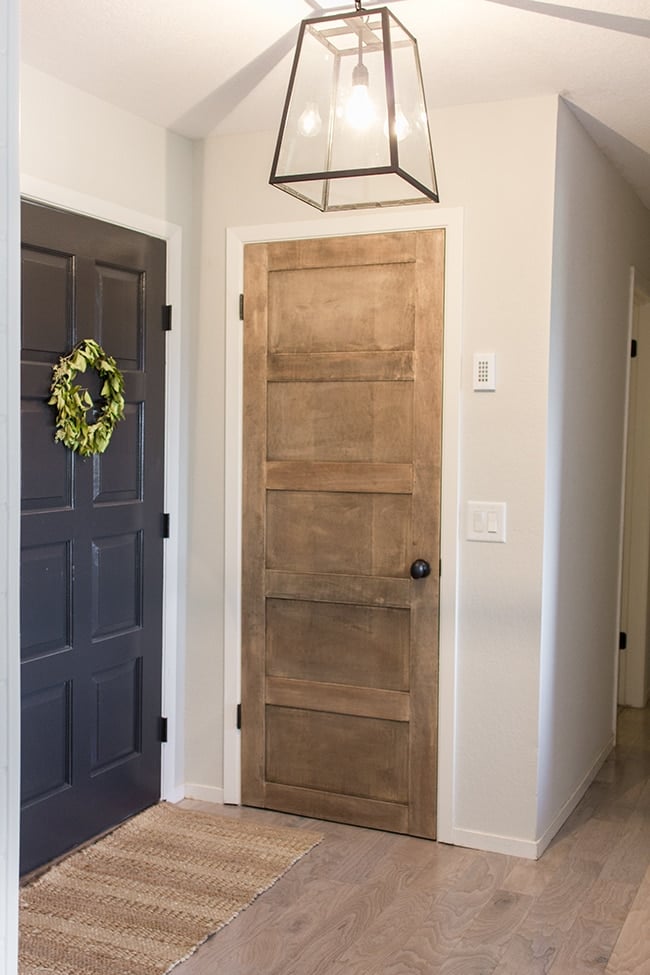
One day I’ll give the inside of this closet a makeover…
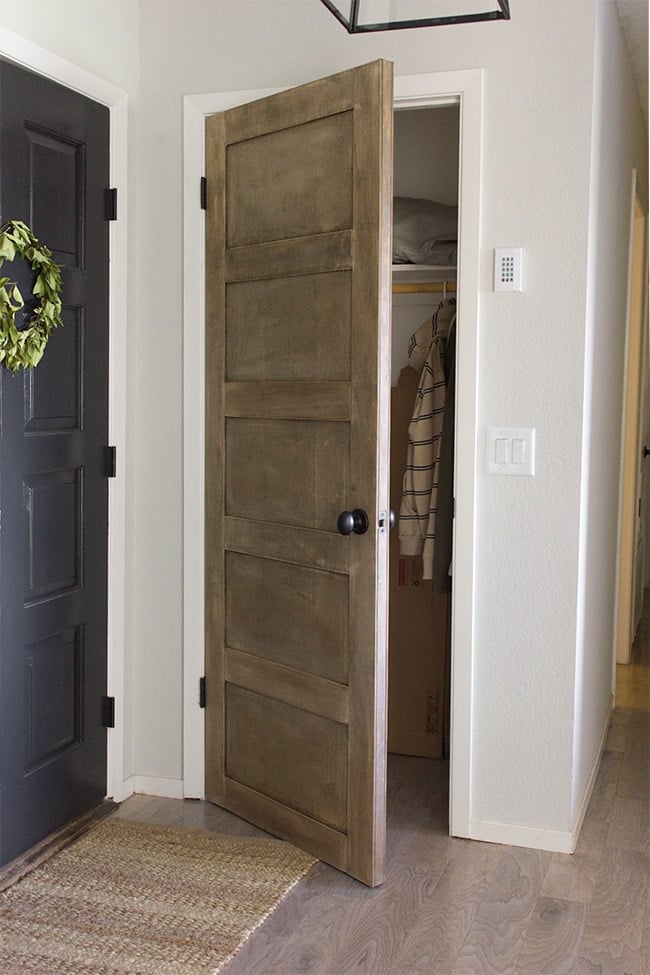
Here’s the view from the entrance to the kitchen:
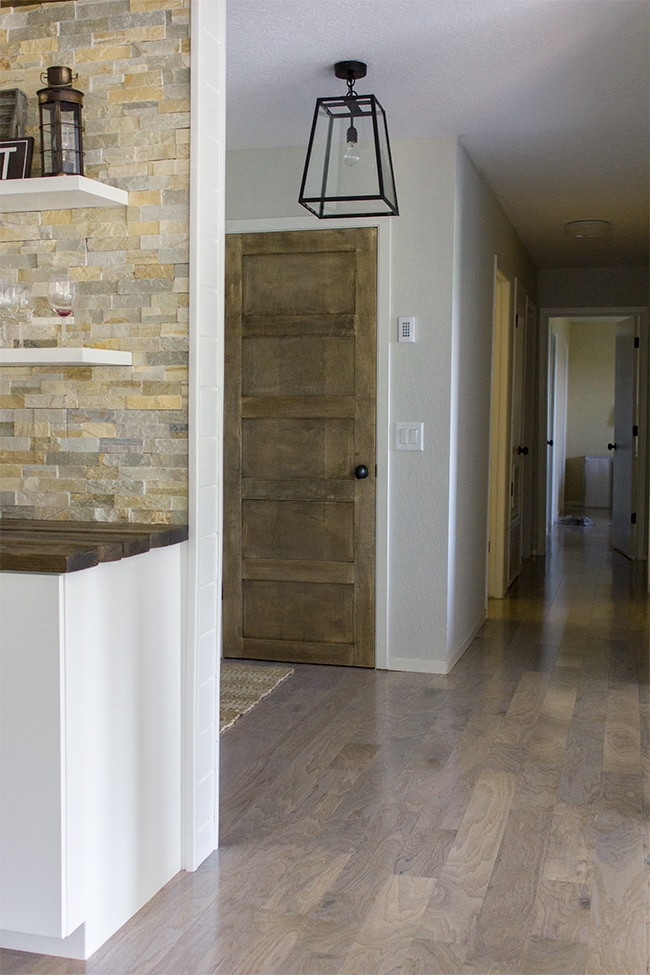
And reflecting in from the mirror…
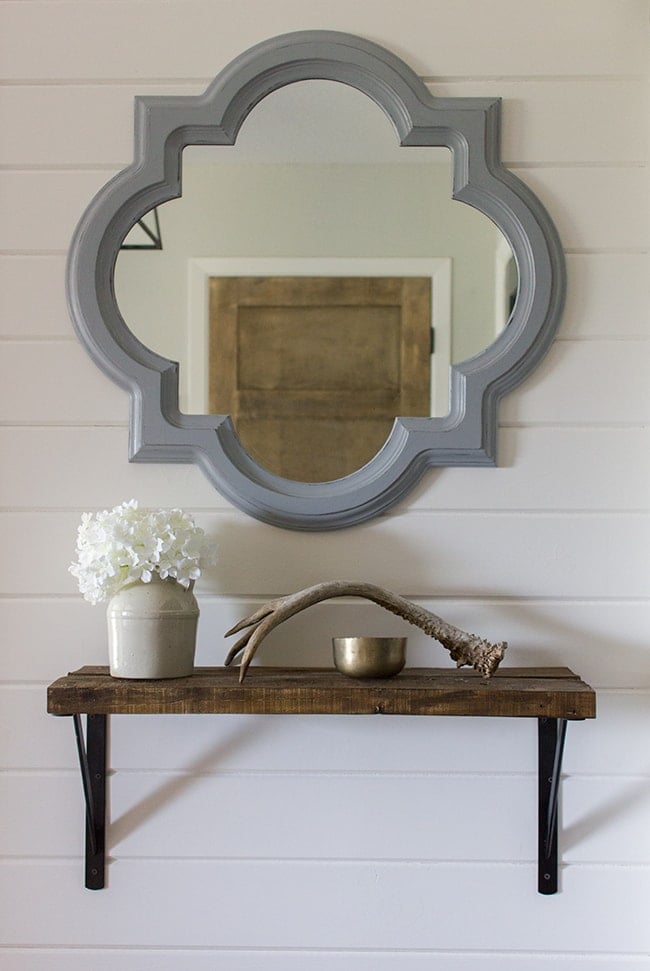
Looking for more DIY door makeovers? Try these tutorials!
- Plain to paneled door upgrade
- The easiest DIY flat panel door upgrade
- DIY rustic barn door
- DIY X-trim sliding door
- Simple closet door X-trim


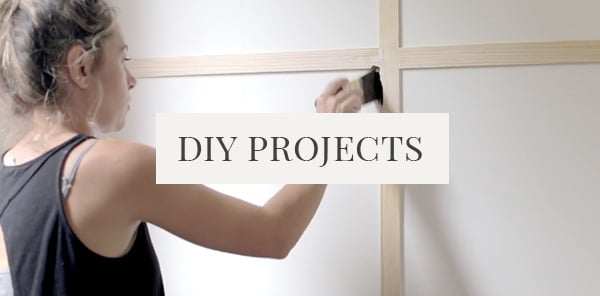
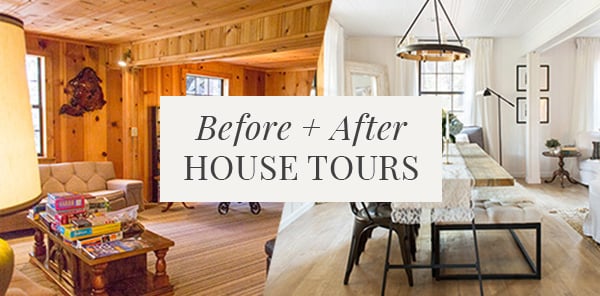



Brandi says
I love your door makeover. Also have a great product for your to try next your have to use a venor. I recently remodel my laundry room and the cabinets and cabinet doors were made from MDF or something with out a wood grain. They were also painted with a lacquer paint. I found some stuff called Stainable Primer. It worked out great I got the wood texture I wanted then I stained and destressed after that.
You can uses it on just about anything and get a wood finish. If you will email I can send a picture I have on my phone. I also have before and after of the cabinets
Denise says
I absolutely love the finish on the door! Did you mix all 3 stains together or did you apply them separately and randomly? I would love to recreate that look on a table. Thank you!
jennasuedesign says
It was a mix of both, just randomly experimented until it turned out the way I wanted!
Matt says
Jenna:
Hi, can you please confirm you used three stains: MinWax Dark Walnut and Driftwood and Weathered Grey from Rustoleum? Also, any tips you have on the staining technique would be appreciated.
Thanks!
Anna, Sydney says
I need to do something with our old ugly hollow cores and found this post on Pinterest. It’s a great post and your door AND entry looks amazing, thank you for sharing. Did you have to move position of the hinges on the casing, or could you reuse the same spots because you repositioned the casing strips?
jennasuedesign says
Nope, the hinges stayed where they were!
Darren says
Hi, if the hinges stay in the same spot does that mean the doors stick out a bit from the front due to them being thicker? And if so is it noticeable?
jennasuedesign says
The difference is so minimal, you don’t even notice. It doesn’t stick out farther than the door casing.
Jenna Sue says
Hi Katy, I posted it a few days later: https://jennasuedesign.blogspot.com/2014/04/kitchen-source-list-budget-breakdown.html
Hope this helps!
Katy Carter (Mary Kathryn) says
Hi Jenna Sue, at the end of your amazing kitchen remodel post you said you were going to put together a source/ shopping list. Where can I find this? Thanks
Anonymous says
Lol!! Well i don't know about her but i sure do lay awake plotting diy projects in my head. Hahaha You are funny!
Anonymous says
You can actually buy brand new hollow core doors from lowes from lowes for $28! Common size 30inx80in
Jenna Sue says
I wish I could find them that cheap (and that fit my existing door frame size)! You are very lucky if you can 🙂
Anonymous says
This is cool but you can purchase a “Real” used door for about $10-15 with built in character. Seems like your method was more expensive in both materials and labor.
Jenna Sue says
I think Lowe's calls it hardboard: https://www.lowes.com/pd_15483-46498-SS1254825_1z0ynu4+2z8vj__?productId=3014304&Ns=p_product_qty_sales_dollar|1&pl=1¤tURL=%3FNs%3Dp_product_qty_sales_dollar|1%26page%3D1&facetInfo=$5%20-%20$10
Love that stuff!
Beja says
I am going to give this a try! I am going to use euchre board instead of veneer because I'm not going to stain. I saw it on one of your other projects, but you called it something else. It is like a super thin piece of MDF, but on the backside reminds me of the back of a bulletin board. I wanna say it's $8 for a big sheet the size of ply wood. It won't easily cut as straight, but it will work.
Courtney Tedder says
I'm not sure our doors are wood. They are the old 70/80s flat hallow doors. Any suggestion for staining? The are the same as your master door.
Anonymous says
i love it and i will do it soon
Jenna Sue says
There really was no specific formula, but I remember it was mostly comprised of the driftwood and walnut, with a little less of the weathered gray. Hope this helps!